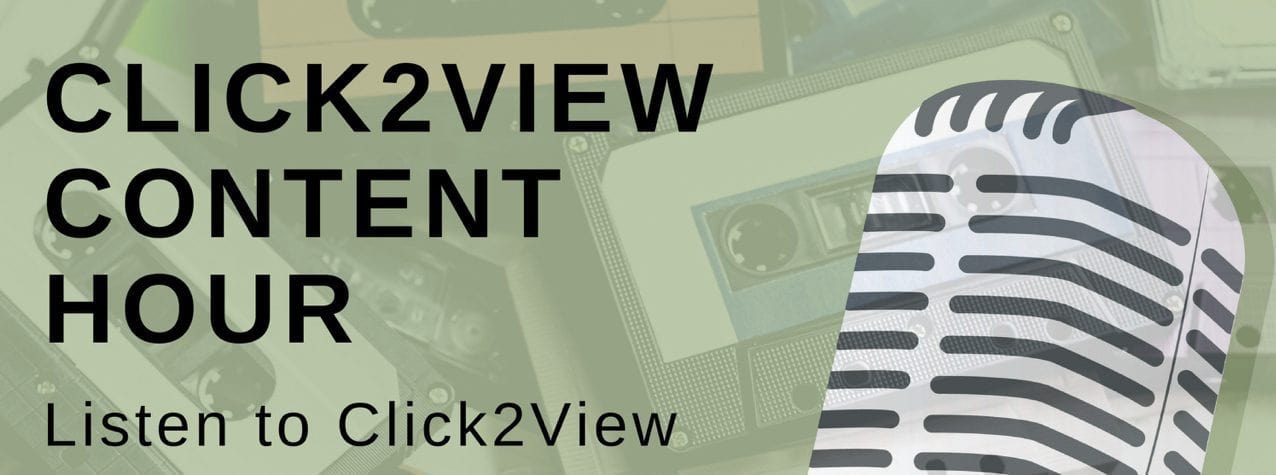

Podcast: On Hollywood, Heroes, Content and CEOs

Miguel Bernas of Mediacorp was my guest on Click2View’s inaugural podcast, and we explored the need for brands to create transmedia content (which I’m sure used to be multi-media). And how Hollywood has shown the way on this.
We also looked at how Hollywood character types should be a serious consideration in telling your brand story. And how CEO character types should be too.
“We can look for leadership from the entertainment brands. This industry is probably more advanced in a lot of these areas, embracing whole idea of transmedia by creating content and telling stories across multiple platforms,” Miguel said.
Stick to your story
What we learned from the chat was that Hollywood has really doubled down on big names, franchises, and properties. “People may ask, what do I have in common with entertainment companies that have a million dollars for production and another million for marketing?” Miguel said.
“As with successful Hollywood franchises, you need to keep rolling with your story if it is successful. That is why we have sequels and prequels.
“One of the most tired clichés in Silicon Valley is ‘you have to experiment, fail fast and move on’. As a result, a lot of people give up too quickly and move on to the next shiny thing,” Miguel said.
I’ve always wondered about this – even the industry standard timeframe for a content series to work which is 18 months. Eventually giving up on content will be seen as similar to giving on PR or brand awareness, it won’t be considered an option.
Have a good tale
Miguel raised one of my recent favourites, a Thai Visa commercial featuring a story about a young woman on holidays alone in Tokyo. There was some lovely storytelling unfolding as the short film followed the journey of a young woman overcoming her insecurities and becoming empowered by the choices that she has made. The messaging was subliminal, with Visa being mentioned as a tool that she used on her journey to self-discovery. You could relate to it, even though you may not be a millennial woman.
Another of Miguel’s favorites is an award-winner by Intel and Toshiba, talking about Topher Grace wakes up with a different persona each day, recording his life on his laptop. The brand plays a role that is not intrusive, and there was also an element of audience activation and community participation, where they encouraged viewers to share their own diary, integrated towards the end.
Don’t be a hero
Integral to any good story are the archetypes. Of course, the brand would want to be seen as the good guy, but Miguel explains that it does not necessarily mean that they have to be the hero. In both the cases cited above, the brand was an enabler – the Gandalf, the Obi Wan, if you will. The brand is that which empowers the hero who struggles with something that the audience can relate to.
“The classic mistake is for brands to advertise ‘we are number one, the widest selling, the most popular’ and these are the things they attribute to being the hero. Then they want the story told in three minutes. It takes time to build up characters,” he shares. The hero is the one who should have the journey and the struggles, which he overcomes with the aid of the helper. The audience relates to the hero, and feels a sense of elation when he wins at the end.
What is important is to start creating, Miguel says.“Trying new things is important, while also trying not to do too much. The approach should be what is done is better than perfect. Getting out there and creating something already puts you ahead of the pack.”
Make Your Voice Heard
I come from a mass media background where, through the years, the media environment had the authority and influence on how audiences consumed information. We had the power through incumbency. With social media, ordinary people are now able to publish their ideas — without an agenda or something to sell.
The playing field is vastly different than before. There is widespread content creation and sharing of thoughts and ideas. Influence is now distributed across the board, and brands are competing with everybody else. With all these platforms emerging, everyone has the capacity to become a storyteller. The way big agencies are pitching it, we’re moving from an interruption model to an engagement model.
Miguel says that the answer lies in good storytelling. “Ordinary people are now creating their own content. Audiences relate to them, as blokes like you and me and are more likely to trust them. In this area, brands have sort of a handicap because they are viewed as having a commercial ulterior motive.”
To have an advantage at this point, he advises consistently communicating your brand values in a way that people will gravitate towards the brand story. One way that brands do this successfully is to have avatars – CEOs and business leaders who give a face to the company, where people see that it is led by this guy who has these values such as integrity, and stands for this and that. These are the Steve Jobs, Tim Cooks and Mark Zuckerbergs, who express their brand’s personality.
On the flipside, we discussed the pitfalls of having one, as in the case of Uber’s ousted CEO Travis Kalanick, whose statements and decisions have created controversy. While I’m sure any brand would rather not have the controversy, it does still make for an engaging read.
I hope you enjoyed the podcast, or at least reading about it.
Please let me know if you have any questions. My email is [email protected]








